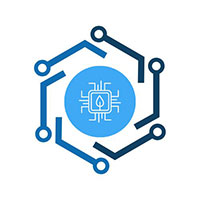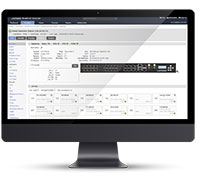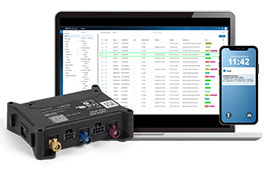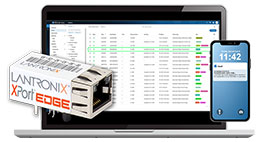
Out-of-Band Management: What, Why, Where and When?
A 2023 Update
For the last seven years, Lantronix has been writing in this blog about out-of-band management (OOBM), sharing observations to help network admins and managers keep up with the latest trends. Since the first blog in 2016 on OOBM, the growing number of connected devices exceeded “explosion” status to whatever adjective is above that. Add in cloud-based capabilities and virtual devices deployed on-prem and OOBM is even more important than ever.
The good news is that with the recent acquisition of Uplogix, Lantronix now has the strongest out-of-band portfolio available. With solutions ranging from single-port console servers to high density 104-port in 1 rack U devices, and functionality like Zero Touch Deployment and advanced automation that takes your OOB from a failover access channel to a secure, reliable platform for network management, Lantronix is the OOBM expert.
But first, the bad news. Downtime is still a major issue for networks seven years later. As the number of connected devices continues to grow, so does the financial impact of unexpected downtime. Looking at the Uptime Institute’s 2022 Outage Analysis, it’s not a pretty picture:
- High outage rates are the norm. 80% of data center managers have experienced an outage in the past three years.
- Outages are getting more expensive. Over 60% of outages result in losses of $100,000 or more, which is up from 39% in 2019. But wait – it gets worse. $1M+ outages have increased from 11%-15% over that same three-year period.
- The big three causes haven’t changed: Power, Network Complexity, and People. Power-related problems are 43% of significant outages, but the Survey says that networking-related issues have been the single biggest cause of all IT service downtime incidents. Networks are more complicated, blending cloud, software-defined architectures, and hybrid designs… with many now widely distributed. Still, a key problem is in the mirror — nearly 40% of organizations had major outages attributed to human error. Procedural issues, whether from not following them or processes with flaws make up 85% of those human errors.
What can out-of-band management do for my network?
We know networking is critical to business, but it’s really difficult. As networks have grown more complicated with clouds, virtual devices, security, increased demands for speed, distribution of network gear across data centers, branch offices, remote sites, and home offices, one thing has remained the same: network devices need maintenance and troubleshooting. “Laying hands” on a device, whether directly over a console port connected to a laptop or over a network is still required. Much of the software for network management assumes you can access gear and collects information over the network itself. This is generally OK, unless the network is the problem.
Enter out-of-band management – at its most basic definition it’s a Secondary channel to manage equipment independent of the production network. In most cases, the production network is based on Ethernet connection, but it could also include devices using InfiniBand or fiber, whereas OOBM uses console servers linked by cellular, POTS, satellite or really any secondary network option. The infrastructure needing management is made up of mission-critical routers, switches, servers, firewalls, wireless access points and more existing both as stand-alone hardware, or increasingly, as virtual appliances.
OOB access ensures remote connections to equipment for routine configuration changes and updates, as well as troubleshooting and triaging when there are issues. Platforms like Lantronix OOBM ensure that this access is secure by utilizing encryption, secure tunneling, and integrating with existing security platforms.
Management access to devices is critical for network admins, but that’s really just the tip of the iceberg. The positioning of a console server – connected in parallel to network infrastructure over serial and/or management ports, and with its own dedicated secondary network connection makes it the perfect platform for secure and resilient network automation. Some of the key applications of Lantronix advanced automated out of band management include:
- Zero-Touch Provisioning of new and replacement gear in the field using locally stored configurations and OS files.
- Continuous monitoring of network gear without taxing the production network that can trigger automated responses based on device telemetry data and following runbook procedures – just like a network admin, but 24/7 and within moments, not hours.
- Single pane of glass management of network devices and servers over serial console or a secondary management Ethernet port for faster uploads of device configurations and to access virtual devices, and/or KVM via service processor/baseboard management using port forwarding.
For network admins, it’s secure access and control to everything everywhere, all at once.
A Partner for Determining Your Out-of-Band Management Needs
The potential of OOBM in your network can be exciting but getting there can be intimidating. Lantronix is not only a solution provider, but also a partner for ensuring you get what you need from your OOBM deployment.
At the evaluation stage, our Field Application Engineers speak your language and can take your networking challenges and use cases to create a proof-of-concept plan to demonstrate the value of the solution. With the largest portfolio of out-of-band products, Lantronix has what you need to connect to all of your devices, in just about any environment, anywhere on the planet.
We’ll be with you through the evaluation and purchase to deployment, where Lantronix Connectivity Services simplifies today’s most common channel for an OOB connection – cellular – with regional and global service plans and easy billing. Throughout the product lifecycle, Level Technical Services provides dedicated networking experts with your success as their key metric.
The Lantronix OOBM Platform
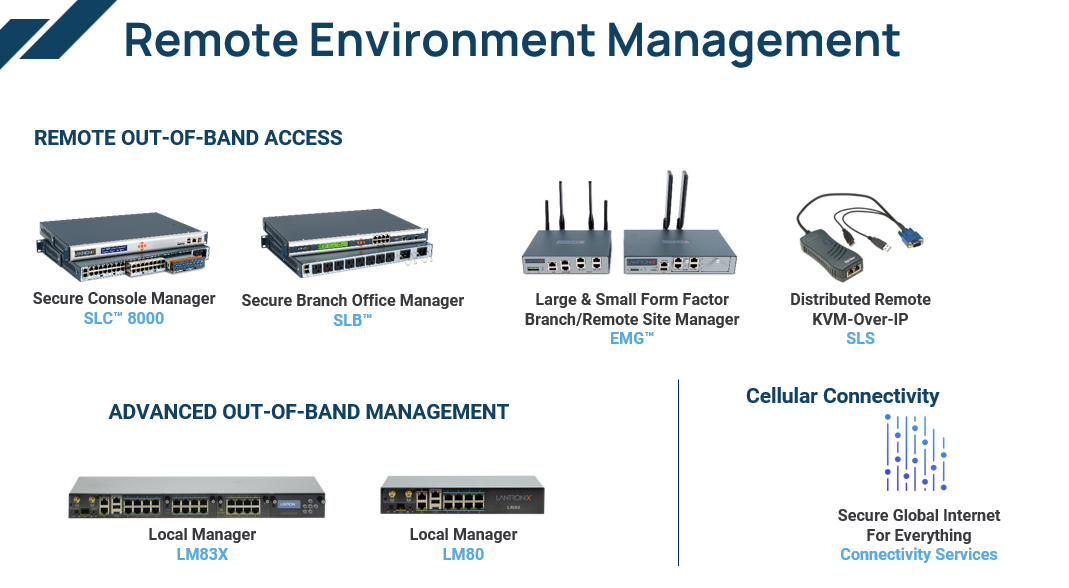
Remote Out-of-Band Access
- Lantronix SLC 8000 Secure Console Manager – Modular console manager that provides secure access to IT equipment
- Lantronix EMG Edge Management Gateway – Edge solution for branch offices, remote locations, retail stores or anywhere an OOB network device gateway is needed and space is limited.
- Lantronix Spider – Distributed remote KVM-over-IP for remote and local access to IT equipment
Advanced Out-of-Band Management
- Lantronix LM83X Local Manager – Modular platform designed to act independently from the network to remotely monitor, manage and control up to 104 devices including a managed power supply. With the Lantronix Control Center, the LM83X delivers advanced out-of-band management and secure, reliable automation.
- Lantronix LM80 Local Manager – a compact platform designed to act independently from the network to remotely monitor, manage and control up to eight devices including a managed power supply.
Software
- Lantronix ConsoleFlow™ – Cloud-based centralized management SaaS solution for console managers with powerful automation, notifications, and smartphone app.
- Lantronix Control Center – Enables advanced out-of-band management by providing a centralized point of control for all Lantronix Local Managers and through this, of managed devices deployed throughout your distributed IT environment.
Let’s Talk Out-of-Band Management
We’d be happy to discuss your OOBM needs and might have some features and considerations you might not even have on your list yet. Please contact us today


